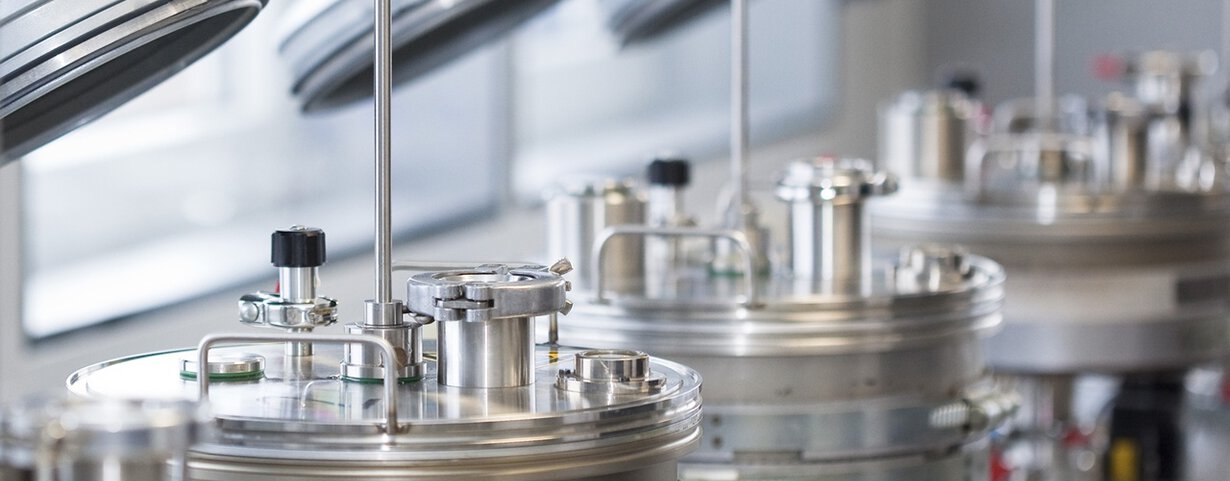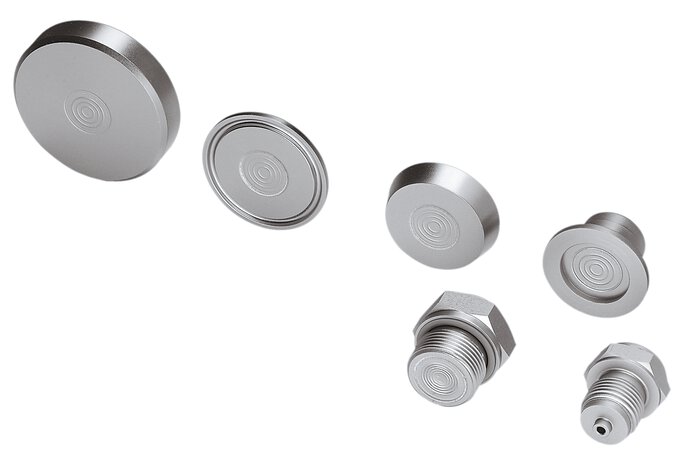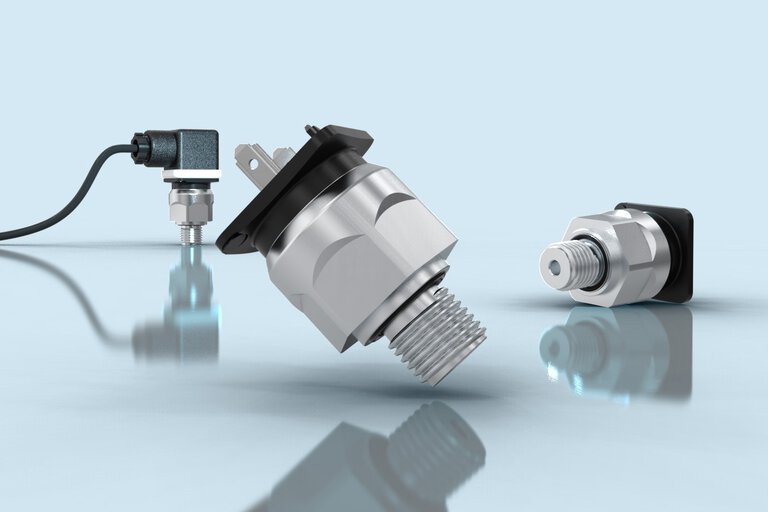

Difference between an inner and front Membrane at Pressure Sensors
Pressure sensors play a crucial role in various industries, including the industrial automation and sensor solutions industries. They are responsible for measuring pressure in various applications ranging from temperature measurement to fluid analysis, and from pressure levels to humidity. In understanding pressure sensors, we need to look at two common configurations: inner and front membrane pressure sensors.
Inner membrane pressure sensors
In inner membrane pressure sensors, the measuring membrane is located inside the housing of the sensor. This membrane is in direct contact with the medium whose pressure is to be measured. This configuration has some specific characteristics:
- Direct contact: The inner membrane is in direct contact with the medium to be measured, resulting in accurate measurements.
- Robustness: Inner membrane sensors are often robust and suitable for demanding environments.
- Suitable for liquids and gases: They can be used for both liquids and gases, depending on the design.
Front membrane pressure sensors
In the case of forward membrane pressure sensors, the measuring membrane is located on the outside of the sensor, directly exposed to the medium. This configuration has its own set of characteristics:
- Bescherming tegen vervuiling: Het voorliggende membraan beschermt de sensor tegen verontreinigingen en vervuiling van het medium.
- Protection against contamination: The front membrane protects the sensor from contaminants and contamination of the medium.
- Thermal insulation option: By placing the membrane on the outside, thermal insulation can be added to protect the sensor from temperature fluctuations.
Here is a comparison table to clarify the specifications of both types of pressure sensors:
|
Specification |
Inner membrane |
Front membrane |
|
Direct contact with media |
Yes |
Yes
|
|
Protection against contamination |
No |
Yes
|
|
Suitable for aggressive media |
Possible |
Yes
|
|
Thermische isolatie |
No |
Possible |
These are some of the main differences between inner and outer diaphragm pressure sensors. The choice between these two configurations depends on the specific requirements of your application and the type of medium you want to measure.

series of pressure sensors
Applications of inner and front membrane pressure sensors
- Industrial Processes: Front membrane pressure sensors are often used in industrial processes for measuring pressure levels in liquids and gases. They are suitable for applications such as monitoring hydraulic systems and industrial machinery.
- Medical Equipment: These sensors are also used in medical equipment such as blood pressure monitors and respirators, where accurate pressure measurements are essential.
- HVAC systems: Front membrane pressure sensors are used in heating, ventilation and air conditioning systems to measure air pressure and fluid pressure for optimal control.
Front membrane pressure sensors:
- Chemical Industry: Front membrane pressure sensors are suitable for applications in the chemical industry, where aggressive chemicals are used. They provide protection against corrosion and contamination.
- Food industry: In the food industry, Front membrane pressure sensors are used to measure pressure levels in processes where food safety must be maintained.
- Environmental monitoring: These sensors are used for environmental monitoring, such as measuring pressure in water and wastewater treatment systems.
- Aerospace: Front membrane pressure sensors are used in aerospace applications for measuring pressure differences in aircraft and spacecraft.
Which sensor to choose?
When choosing between inner and front membrane pressure sensors, you must consider the specific needs of your application. Here are some considerations to help you make the right choice:
- Type of Medium: If your application deals with aggressive media or liquids that may corrode the sensor, a front membrane sensor may be preferred because of the protection provided by the external membrane.
- Accuracy: Inner membrane pressure sensors generally provide direct contact with the medium, which can result in more accurate measurements. If precision is essential to your application, this type of sensor may be more appropriate.
- Protection against contamination: For applications where the medium can become contaminated, such as in the industry, a front membrane pressure sensor can help keep the sensor clean and ensure accurate measurements.
- Thermal Considerations: If your application is sensitive to temperature fluctuations, placing the membrane on the outside of the sensor with thermal insulation may offer advantages.
- Cost: Also consider your budgetary constraints when choosing between the two configurations, as from membrane pressure sensors can sometimes be more expensive.
- Application requirements: Review the specific requirements of your application and consult technical experts to make the right choice based on your needs.
At JUMO, we offer a wide range of pressure sensors, both inner and front membrane, to meet the diverse needs of our customers. For detailed information on our products and which best suits your application, please feel free to contact us for customized advice.
For more detailed information and technical specifications of pressure sensors, please visit the following sources:
- Differential Pressure Sensors at JUMO
- Absolute Pressure at JUMO
- Hydrostatic Pressure at JUMO
- Relative Pressure at JUMO
- Pressure Definition at JUMO
- Static and Dynamic Pressure at JUMO
- International Pressure Units at JUMO
For product information, you can also consult the following links:
We hope this article has helped you understand the difference between inner and front membrane pressure sensors. If you need more specific information or have questions about pressure sensors, please do not hesitate to contact JUMO, your trusted partner in industrial sensor and automation technology.
The most frequently asked questions about membranes in pressure sensors
- What is the difference between an inner and front membrane in pressure sensors?
The difference lies in the placement of the measuring membrane: inner membrane sensors have the membrane internal, while front membrane sensors have the membrane external. - Which type of pressure sensor is more suitable for liquid measurements?
In general, inner membrane sensors are more suitable for liquid measurements because of direct contact with the medium. - What are the advantages of a front membranes in pressure sensors?
A front membrane provides protection against contamination and is suitable for aggressive media. - Which pressure sensor is more accurate, inner or front membane pressure sensors?
In general, inner membrane sensors are considered more accurate because of their direct contact with the medium. - Are inner membrane sensors more sensitive to temperature fluctuations?
Yes, inner membrane sensors can be more sensitive to temperature fluctuations because of their internal placement. - Which type of pressure sensor is more expensive?
Front membrane sensors are often more expensive because of their special design and protective membrane. - Can I use front membrane sensors for air pressure measurements?
Yes, front membrane sensors are suitable for measurements of air pressure. - What type of pressure sensor is commonly used in industrial applications?
Both types are used in industrial applications, but the choice depends on the specific requirements of the application. - Do inner membrane sensors need additional accessories for protection?
Internal membrane sensors usually do not require additional protection because of their internal placement. - Where can I find more technical information about these pressure sensors?
You can find more technical information on the JUMO website or by contacting JUMO technical support for specific questions about pressure sensors.
About the Author
My name is Saskia van der Laan and I have been working at JUMO for quite some time, combining my professional skills with my passion for writing. Always with the aim of using written text to translate technology into practice and to inform and inspire the reader. In my spare time, I like to do sports and enjoy a long walk with the dog.


